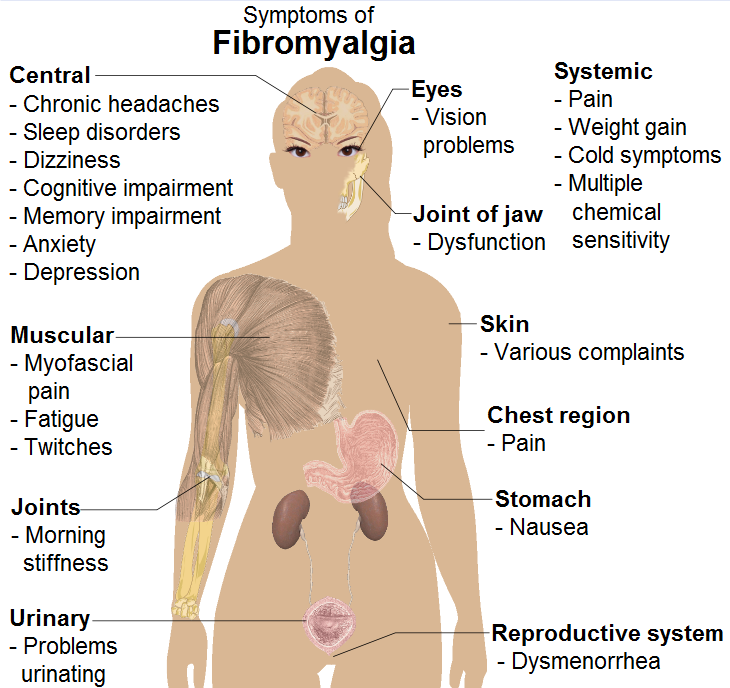
Fibromyalgia
Chronic fibromyalgia symptoms are similar to those of other illnesses and a diagnosis cannot be made with certainty without testing. Fibromyalgia is therefore frequently misdiagnosed.
Overview
Fibromyalgia, also known as musculoskeletal pain, is a condition that causes widespread pain, fatigue, difficulty sleeping, and, in many cases, also results in emotional and mental distress. People with fibromyalgia may be more sensitive to pain than people who don't have it. This is referred to as abnormal pain perception processing. Fibromyalgia is treatable and manageable, although the exact cause is unknown.
Causes
Fibromyalgia affects people of all ages, including children. Age is one of the known risk factors. Other potential risk factors that may exist include:
Lupus or rheumatoid arthritis. If you have lupus or rheumatoid arthritis (RA), you are more likely to develop fibromyalgia.
Gender: Women are twice as likely as men to suffer from fibromyalgia.
Post-traumatic stress disorder (PTSD) can be caused by traumatic or stressful events such as car accidents.
Wounds that recur. The harm is caused by repeated stress on a joint, such as bending one's knee frequently.
Infections (including viral infections)
Family history
Being overweight is a problem.
Symptoms
The most common fibromyalgia symptoms are as follows:
Pain and stiffness all over the body
Tiredness and exhaustion
Anxiety and depression problems with sleep, problems with focus, memory and thought.
Migraines, as well as other types of headaches
Additional signs and symptoms may include:
Hand and foot numbness or tingling
Mandibular or facial pain, including temporomandibular joint stiffness,
Problems such as bloating, constipation, stomach pain, and sometimes irritable bowel syndrome (IBS)
Ayurvedic View
Mamsa medo gata vata - due to the following nidana (causes) like ati vyayama (overexertion), rata prayoga (excess travelling), ratri jagarana (night awakening), ruksha (dry, less nutritious food), etc, all lead to vata dosha prakopa (aggravation), which settles in mamsa dhatu (muscle tissues), leading to pain like danda hatam (pain as if beaten with a stick). This is fibromyalgia. Ayurveda's way of approach is to bring dosha back to prakruta awastha (balance state), nourish the body, and reduce the symptoms by ayurvedic panchakarma treatment.
Fibromyalgia
Treatment for
DISCLAIMER: Listed treatment details are only for information purposes. Treatments and duration may vary depending on numerous factors. Treatments for your condition may not be limited to this list.






















